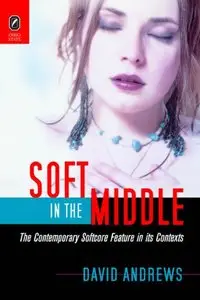Soft in the Middle: The Contemporary Softcore Feature in Its Contexts By David Andrews
2006 | 334 Pages | ISBN: 0814210228 | PDF | 17 MB
2006 | 334 Pages | ISBN: 0814210228 | PDF | 17 MB
As the first survey of its kind, Soft in the Middle positions the contemporary softcore feature as a middlebrow form of pornography. This genre of film and video has been produced by a complex and often elusive industry situated in the ambiguous "middle" regions between hardcore and Hollywood. In meticulous detail, Soft in the Middle demonstrates that softcore's under-the-radar success and pervasive cultural devaluation may be understood in terms of the "postfeminist" strategies employed by successive generations of producers and distributors, each intent on overcoming obstacles to the mainstream distribution of pornographic material. Softcore and its American precursors became more "feminized" and "female friendly" as their distribution widened, a process hastened in the 1980s by the industry's transition to private, non-theatrical modes of distribution and exhibition (e.g., home-video outlets and premium-cable networks like Cinemax). One of the byproducts of this development is that contemporary softcore has frequently resorted to what are arguably anti-male or "misandristic" attitudes and depictions. Clearly, the genre challenges traditional assumptions about pornography, including those held by feminists on both sides of "the porn debates." Drawing on original industrial research, extensive sampling, and wide-ranging scholarship, Soft in the Middle offers a nuanced look at a discreetly indecent genre whose central commodity has always been female nudity. The book examines the genre's history, describes its deflationary trajectory, and differentiates the reading patterns of its disparate audiences, including "cult" critics and feminist critics. Naturally, the book also considers the genre's formal and ideological conventions, surveying its most exemplary subgenres, styles, and motifs--and lavishing particular attention on its most influential studios, directors, and texts.



